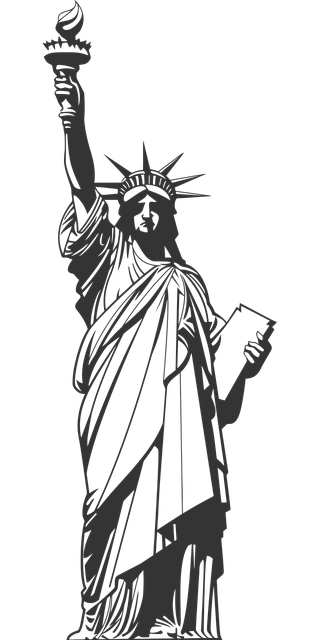The American Eagle and the American Flag are iconic symbols that represent the United States' spirit, values, and heritage. The Eagle, with its emblematic presence on the flag, signifies America's commitment to liberty, democracy, and unity, reminding citizens of the core principles upon which the nation was founded, including freedom, independence, and self-governance. These symbols not only reflect the country's sovereignty but also its role as a global champion of liberty. The American Flag, with its red, white, and blue stripes and stars, is a daily reminder of national pride and identity, capturing the historical and cultural essence of America. It serves as a unifying emblem for all Americans, fostering a sense of collective pride and patriotism across diverse communities. Both the American Eagle and the American Flag are deeply entrenched in American culture, transcending time as enduring icons that symbolize resilience, strength, and commitment to democracy and justice, shaping America's identity and influence on a global scale.
The American Eagle and the American Flag stand as enduring emblems of patriotism, symbolizing the core values and aspirations that define America. This article delves into their interwoven significance, exploring how they encapsulate history, pride, and unity. From their prominent displays in civic spaces to their subtle appearances in popular culture, these icons serve as a testament to the nation’s identity and its journey. Join us as we unravel the deep-rooted meanings behind the American Eagle and the American Flag, and understand their lasting impact on America’s collective consciousness.
- The Enduring Symbol of the American Eagle: A Beacon of Liberty and National Identity
- The American Flag: Weaving Together History, Pride, and Unity
- The Interplay of the Eagle and the Flag: Emblems of America's Values and Visions
- The Legacy of the American Eagle and Flag in Popular Culture and Beyond
The Enduring Symbol of the American Eagle: A Beacon of Liberty and National Identity

The American Eagle, a powerful emblem woven into the fabric of American identity, stands as a beacon of liberty and national pride. This majestic bird, depicted in mid-flight with outstretched wings and a bold eye, is an iconic symbol that graces the reverse side of the American Flag. Its image is synonymous with the ideals of freedom and democracy that America represents. The eagle’s presence on the flag serves as a constant reminder of the values upon which the nation was founded—values that continue to inspire and unite people from all corners of the United States. The reverence for the American Eagle transcends time, reflecting the enduring spirit of the American people and their commitment to independence and self-governance.
The intertwined imagery of the American Eagle and the American Flag is a testament to the shared heritage and collective aspirations that define America. The eagle’s soaring form on the flag’s field of stars and stripes evokes a sense of national unity and identity, rallying Americans from diverse backgrounds around common ideals. This symbol of power and freedom not only represents the country’s sovereignty but also its role as a global leader in the pursuit of liberty for all. The American Eagle’s resilience and majesty mirror the nation’s own resilience, reminding citizens and visitors alike of the enduring legacy of American patriotism and freedom.
The American Flag: Weaving Together History, Pride, and Unity

The American Flag stands as a timeless symbol that weaves together the threads of history, pride, and unity, embodying the spirit of America. At its heart lies the American Eagle, a majestic emblem representing freedom and resilience. This avian motif, depicted with outstretched wings, symbolizes the nation’s forward movement and ability to rise above challenges. The flag, which has undergone numerous revisions to reflect the evolving nation it represents, is a testament to America’s enduring values and the diverse tapestry of its people. Each stripe and star carries the weight of stories, sacrifices, and triumphs that have shaped the American narrative. It serves as a daily reminder of the shared heritage and collective aspirations of Americans, fostering a sense of pride and belonging across the nation’s vast and varied landscapes.
The iconic American Flag, with its prominent display of the American Eagle, is not merely a piece of cloth but a living symbol that captures the essence of patriotism. Its presence is felt in every corner of the country, from bustling city streets to quiet suburban neighborhoods, and it remains a powerful emblem of unity for all who call America home. The flag’s history is as rich and varied as the nation itself, with its colors and design reflecting the values of liberty, justice, and democracy that are deeply ingrained in the American ethos. It serves as a rallying point for individuals to express their love for country and their commitment to uphold the principles upon which it was founded.
The Interplay of the Eagle and the Flag: Emblems of America's Values and Visions

The American Eagle and the American Flag are indelible symbols that capture the essence of America’s values and visions. They represent a shared heritage of patriotism, freedom, and resilience, woven into the cultural fabric of the nation. The eagle, a creature of strength and majesty, soars above the landscape as a symbol of the country’s ability to rise above challenges. Its sharp gaze and outstretched wings convey a sense of vigilance and readiness to protect the homeland. Meanwhile, the American Flag, with its thirteen stripes and stars, stands as a beacon of liberty and unity. Each star and stripe tells a story of diverse individuals coming together under common ideals. Together, these emblems articulate a powerful narrative about the nation’s identity and aspirations, serving as a daily reminder of the principles upon which America was founded.
The interplay between the American Eagle and the American Flag in public and civic spaces serves to reinforce the shared values that define the country. The eagle’s presence often adorns official seals and monuments, symbolizing the government’s commitment to safeguard the nation and its people. Conversely, the flag is a ubiquitous presence at public events, from solemn ceremonies to joyful celebrations, embodying the collective spirit of American citizens. These symbols resonate deeply with the national consciousness, reminding each generation of the responsibilities of stewardship and the pursuit of a more perfect union. As icons of America’s past, present, and future, the American Eagle and the American Flag stand as timeless testaments to the nation’s enduring commitment to democracy, justice, and freedom.
The Legacy of the American Eagle and Flag in Popular Culture and Beyond

The American Eagle and Flag are enduring symbols that have transcended their traditional significance to become iconic representations of patriotism and freedom in popular culture and beyond. The American Eagle, with its majestic form and spread-winged emblem, has been woven into the fabric of American identity, symbolizing the country’s resilience, strength, and the freedom it champions. This national bird features prominently on the country’s coat of arms and the Great Seal of the United States, and its image is immediately recognizable worldwide. In popular culture, the eagle has been immortalized in various forms, from sports mascots to media franchises, often serving as a rallying point for national pride and unity.
The American Flag, with its red, white, and blue hues, stands as a testament to the ideals of liberty and democracy. It has been featured in films, television shows, and music videos, serving as a backdrop during moments of celebration, remembrance, and protest. The flag’s presence is not limited to American media; it has also made significant appearances in international contexts, highlighting the global influence of these national symbols. From fashion statements with flag-inspired designs to the use of its colors and motifs in art and branding, the American Flag continues to inspire a sense of belonging and identity across diverse platforms. Its legacy is one of enduring symbolism, capturing the essence of American history and the aspirations it represents.
